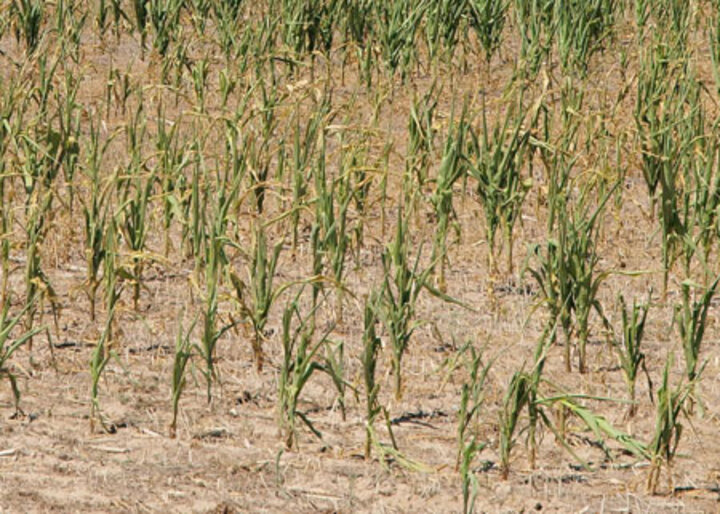July 20, 2012
One option for salvaging damaged, dryland corn is as corn silage to feed ruminant animals. This article covers issues in pricing drought-stressed corn silage. Before harvesting for silage, check with your crop insurer and farm program representative.

| Table I. Guidelines for discouting the value of drought-damage corn. (Source: “Pricing Drought Stressed Corn”, W-187, Lauer, J, University of Wisconsin Extension) | |
| Feed value comparisons for silage | |
| Condition of drought corn | Feed value of normal corn silage |
|
20-40 bu/ac |
90-100% |
|
0-20 bu/ac |
80-90% |
|
Short, barren stalks |
70-80% |
ResourcesA corn silage pricing spreadsheet is available on the University of Wisconsin Extension website under Economics. Kansas State University has a corn pricing spreadsheet at its AgManager website under livestock decision tools. The UNL Extension NebGuide, The Use and Pricing of Drought Stressed Corn, G1865, covers how to identify drought stress in corn, estimate potential yield, select for forage or grain harvest, and establish prices. |
|
First, consider “Does drought-stressed corn silage have the same feed value as normal corn silage?” Unless it is severely drought damaged, low yielding corn has about the same silage feeding value as normal corn. However, Table I provides guidelines for discounting its value. Silage from barren corn stalks will have as much as 80% of the feed value of silage from normal corn and silage from corn yielding 40 bushels per acre or more will have 100% of the feeding value of silage from normal corn. Dry matter yields will be less. You can set aside some rows of corn to determine yield and discount for corn silage value.
Second, consider “What is standing corn worth for feed?” Be certain to agree whether the buyer or seller is going to pay the harvest costs. Harvest and transportation costs can be rolled into the price of standing corn; however, they are easier to manage when separated from the cost of corn.
Third, consider “So what price should I set for this corn?” Several spreadsheets can help you and are the best way to calculate a price. They calculate price for as-fed or dry matter. They can include harvest costs and feeding value discount in the price calculation.
Tips
Many have asked for some guidelines for developing a price. First, a ton of as-fed corn silage is worth five to six times the price of a bushel of corn or nine to 10 times the price of a bushel of corn if it is delivered to the bunker or pile. Another rough rule of thumb is that standing corn is worth about one-third of the price of alfalfa hay. This rule is difficult to use since alfalfa quality and price can vary widely.
There are several methods for arriving at a total weight of corn silage. One is to run all of the corn silage across a scale. Portable scales are useful too. Another way is to calculate the total volume of the corn silage and multiply by a silage density factor. The “book” factors however were developed for normal corn silage. Density of drought-damaged corn silage will differ. A third method is to determine tonnage harvested. Leave random areas un-harvested, then cut these areas and weigh them. Use this sample to determine the tonnage per acre. Buyers and sellers should agree on the way to determine tonnage harvested before chopping actually begins
Valuing drought-injured corn for livestock feed is one way a crop producer can try to recover some production costs. There may be a high demand for forage in some parts of Nebraska, thus prices in the guidelines and spreadsheet calculations are just a starting point. Supply and demand will influence the actual prices buyers and sellers agree.
Robert Tigner
UNL Extension Educator, Chase County
